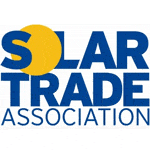It adds that while the cost reductions enjoyed by solar PV since 2011 have been mainly driven by falling equipment costs, the cost reductions projected for solar thermal would be mainly driven by efficiencies on the installation side. Sales are currently slow in the solar thermal sector, but the STA expects the domestic Renewable Heat Incentive, launching next spring, will help boost deployment and unlock the technology’s cost reduction potential.
The study, originally submitted to DECC during this summer’s domestic RHI consultation, found that PV equipment costs had reduced by 66 percent since 2011 while the installer’s non-equipment costs reduced by 49 percent. The paper builds on these observed trends to forecast a 21.6 percent reduction in equipment costs and a 35.8 percent reduction in non-equipment costs for solar thermal – a 29.2 percent cost reduction overall – if it is able to enjoy a similar level of market growth.
STA chief executive Paul Barwell said: “Solar heating installs more than doubled in the two years from 2008 to 2010 but have been in decline since then. The launch of the Feed-in Tariff for on-site electricity has spurred strong growth in technologies like micro-wind and solar PV, but the lack of a similar incentive scheme for heating left solar thermal in the shade. Current solar thermal install rates are almost back at 2008 levels.
“The good news is that the domestic RHI is now just round the corner and the STA has secured a workable tariff and regulatory framework for solar thermal, so industry now has a great chance of regaining the lost momentum. As costs come down, so too will the tariffs, as the government seeks to minimise policy costs and stabilise consumer returns. So the message here is not that customers should wait for cheaper systems, but that from a macro-economic perspective, solar thermal is ready to realise its mass market potential and make a major, cost-effective contribution to the UK’s renewable energy objectives.”
